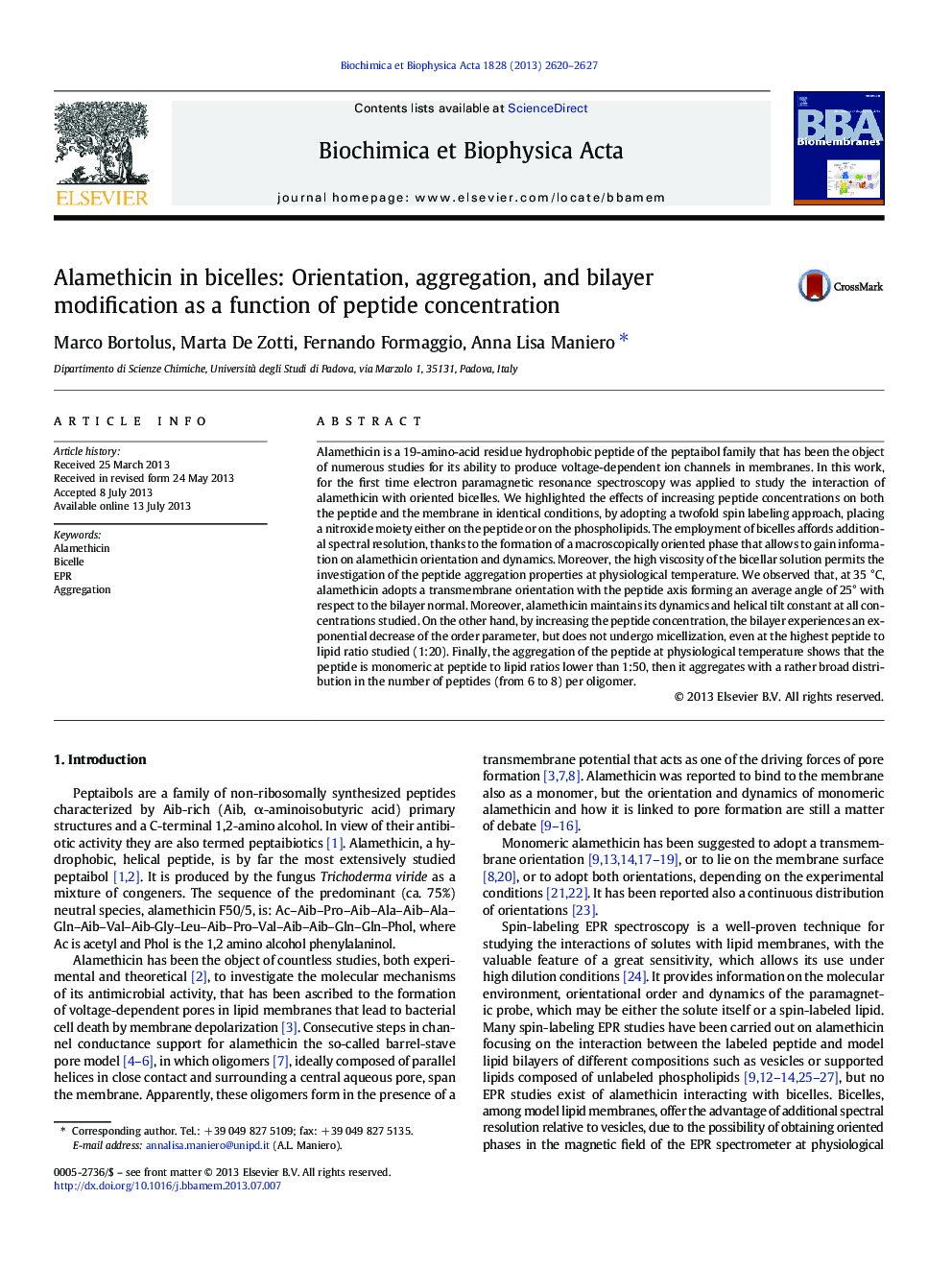| کد مقاله | کد نشریه | سال انتشار | مقاله انگلیسی | نسخه تمام متن |
|---|---|---|---|---|
| 1944306 | 1053203 | 2013 | 8 صفحه PDF | دانلود رایگان |

• Alamethicin adopts a transmembrane orientation in bicelles at all concentrations.
• Monomeric at low P:L ratios and no transmembrane potential
• Aggregated at high P:L ratios with variable oligomeric size
• It does not change order or dynamics except at high P:L ratios.
• Bilayer order decreases exponentially increasing the P:L ratio.
Alamethicin is a 19-amino-acid residue hydrophobic peptide of the peptaibol family that has been the object of numerous studies for its ability to produce voltage-dependent ion channels in membranes. In this work, for the first time electron paramagnetic resonance spectroscopy was applied to study the interaction of alamethicin with oriented bicelles. We highlighted the effects of increasing peptide concentrations on both the peptide and the membrane in identical conditions, by adopting a twofold spin labeling approach, placing a nitroxide moiety either on the peptide or on the phospholipids. The employment of bicelles affords additional spectral resolution, thanks to the formation of a macroscopically oriented phase that allows to gain information on alamethicin orientation and dynamics. Moreover, the high viscosity of the bicellar solution permits the investigation of the peptide aggregation properties at physiological temperature. We observed that, at 35 °C, alamethicin adopts a transmembrane orientation with the peptide axis forming an average angle of 25° with respect to the bilayer normal. Moreover, alamethicin maintains its dynamics and helical tilt constant at all concentrations studied. On the other hand, by increasing the peptide concentration, the bilayer experiences an exponential decrease of the order parameter, but does not undergo micellization, even at the highest peptide to lipid ratio studied (1:20). Finally, the aggregation of the peptide at physiological temperature shows that the peptide is monomeric at peptide to lipid ratios lower than 1:50, then it aggregates with a rather broad distribution in the number of peptides (from 6 to 8) per oligomer.
Figure optionsDownload high-quality image (161 K)Download as PowerPoint slide
Journal: Biochimica et Biophysica Acta (BBA) - Biomembranes - Volume 1828, Issue 11, November 2013, Pages 2620–2627